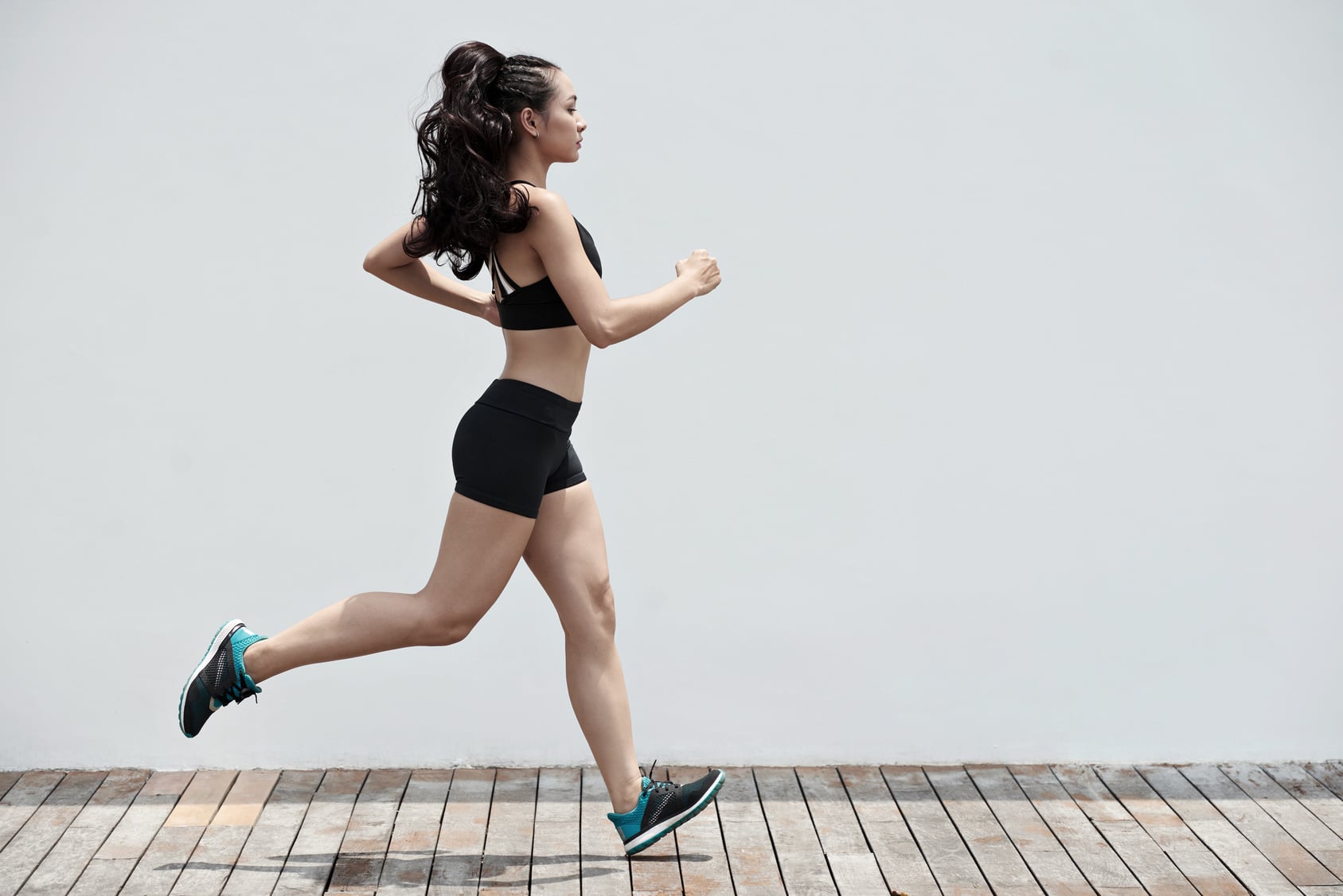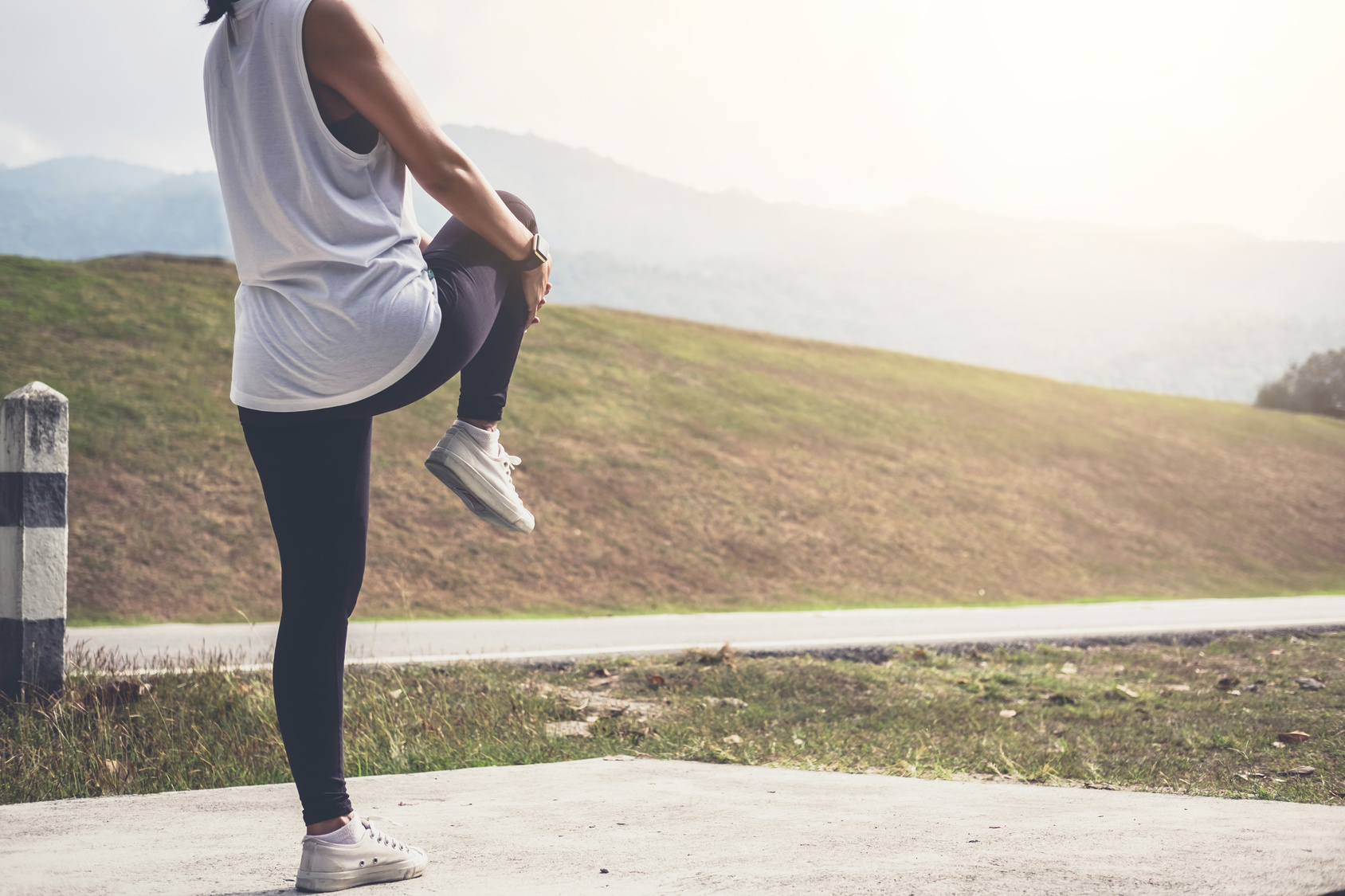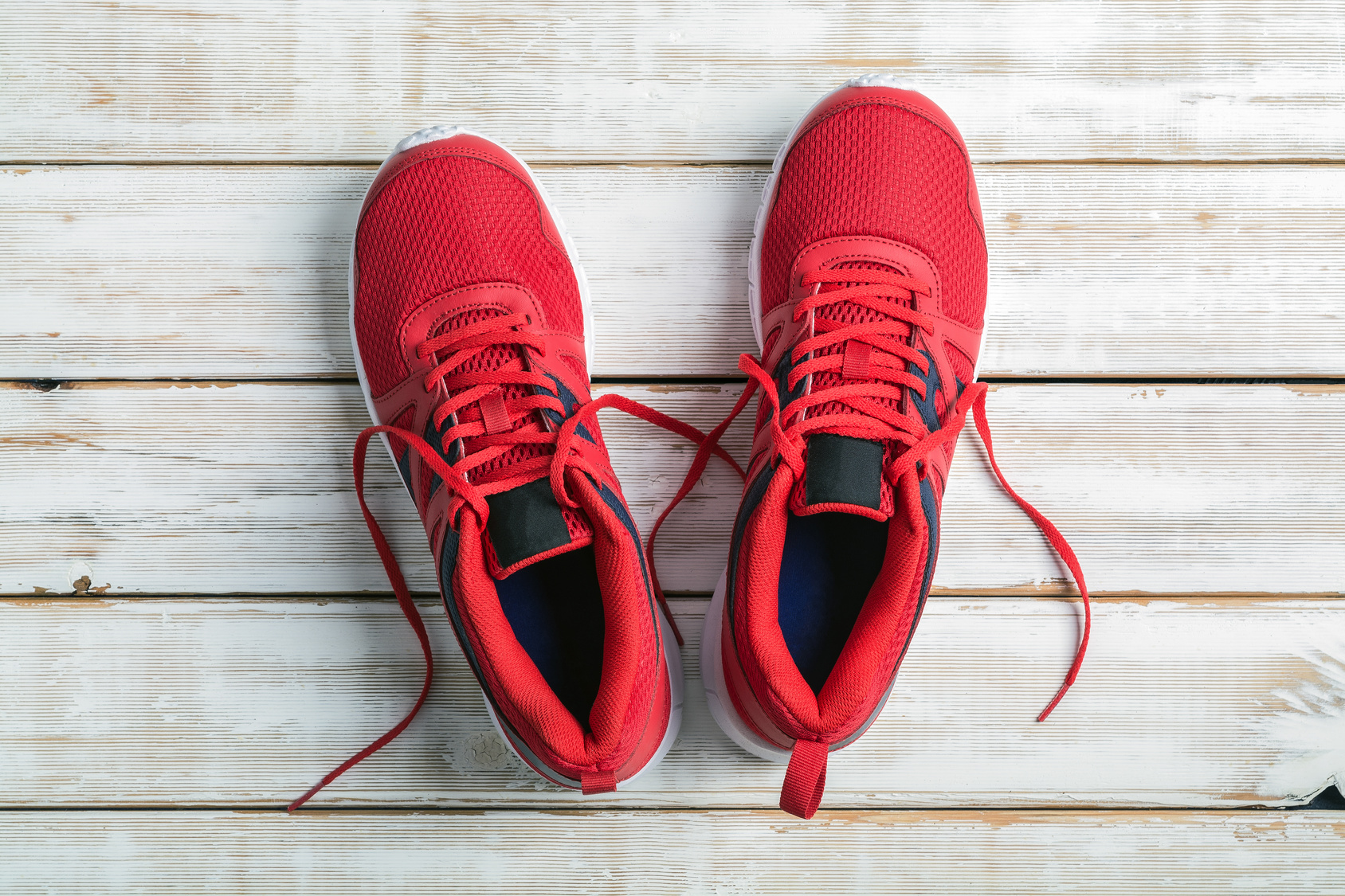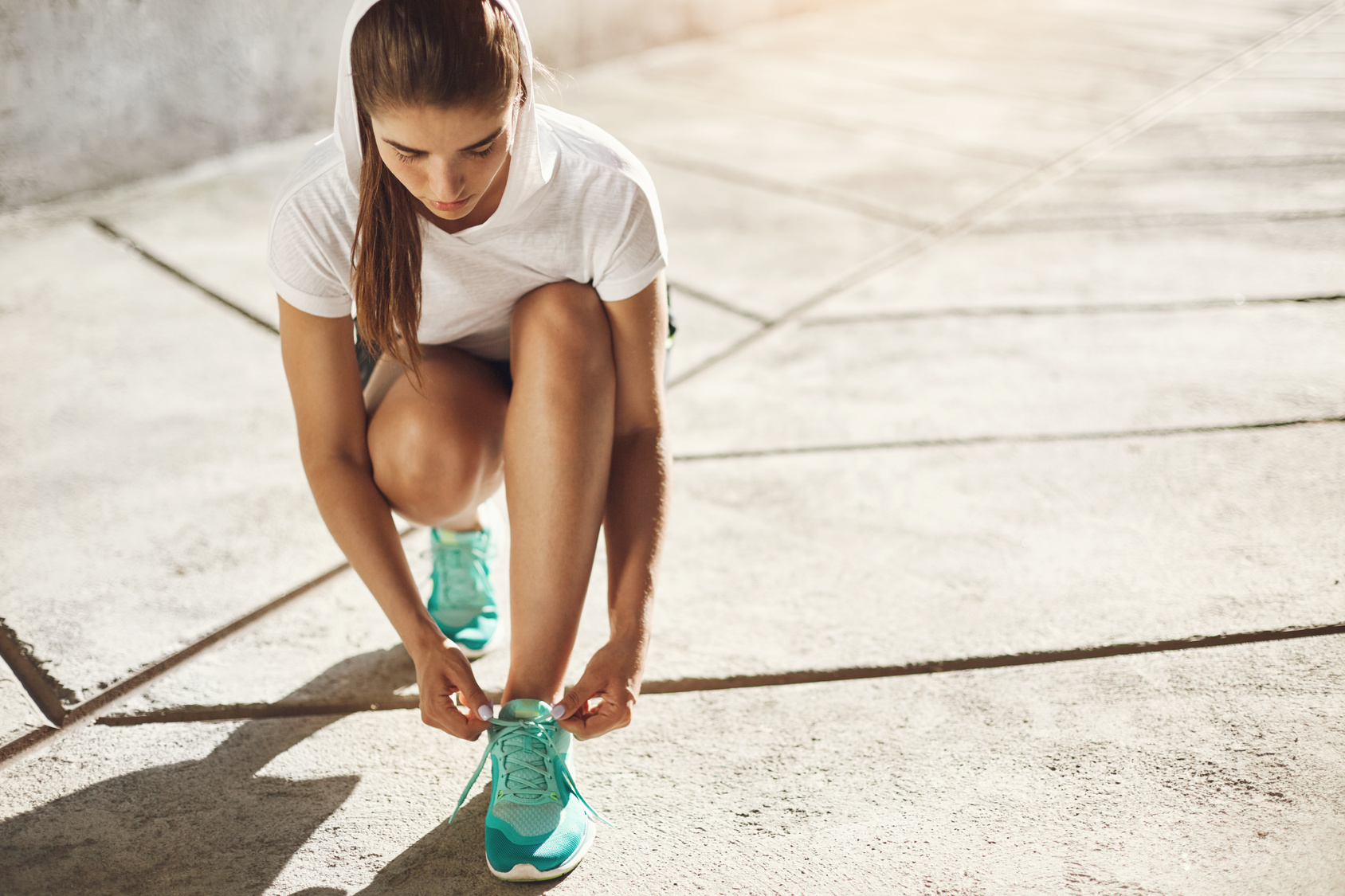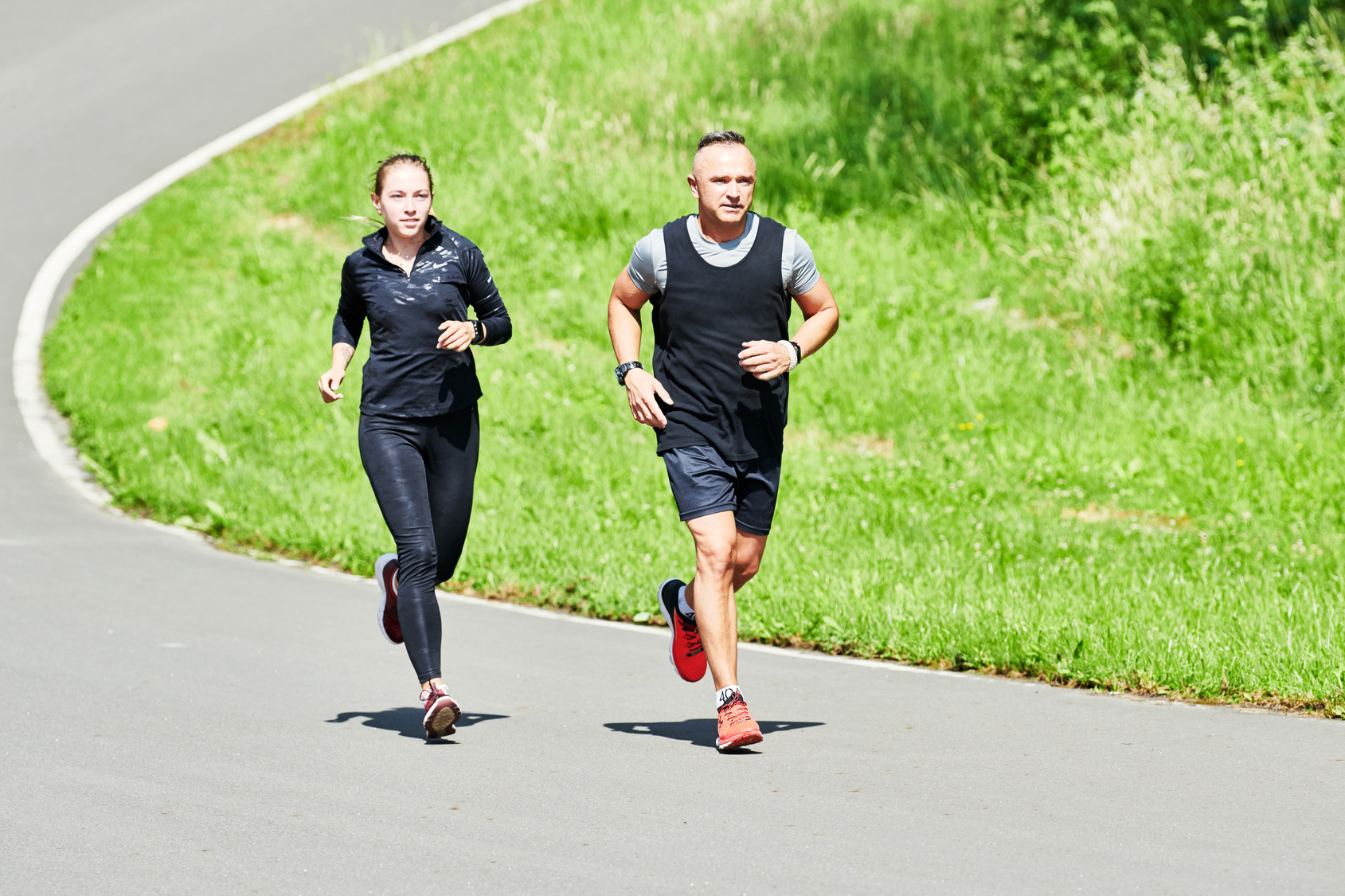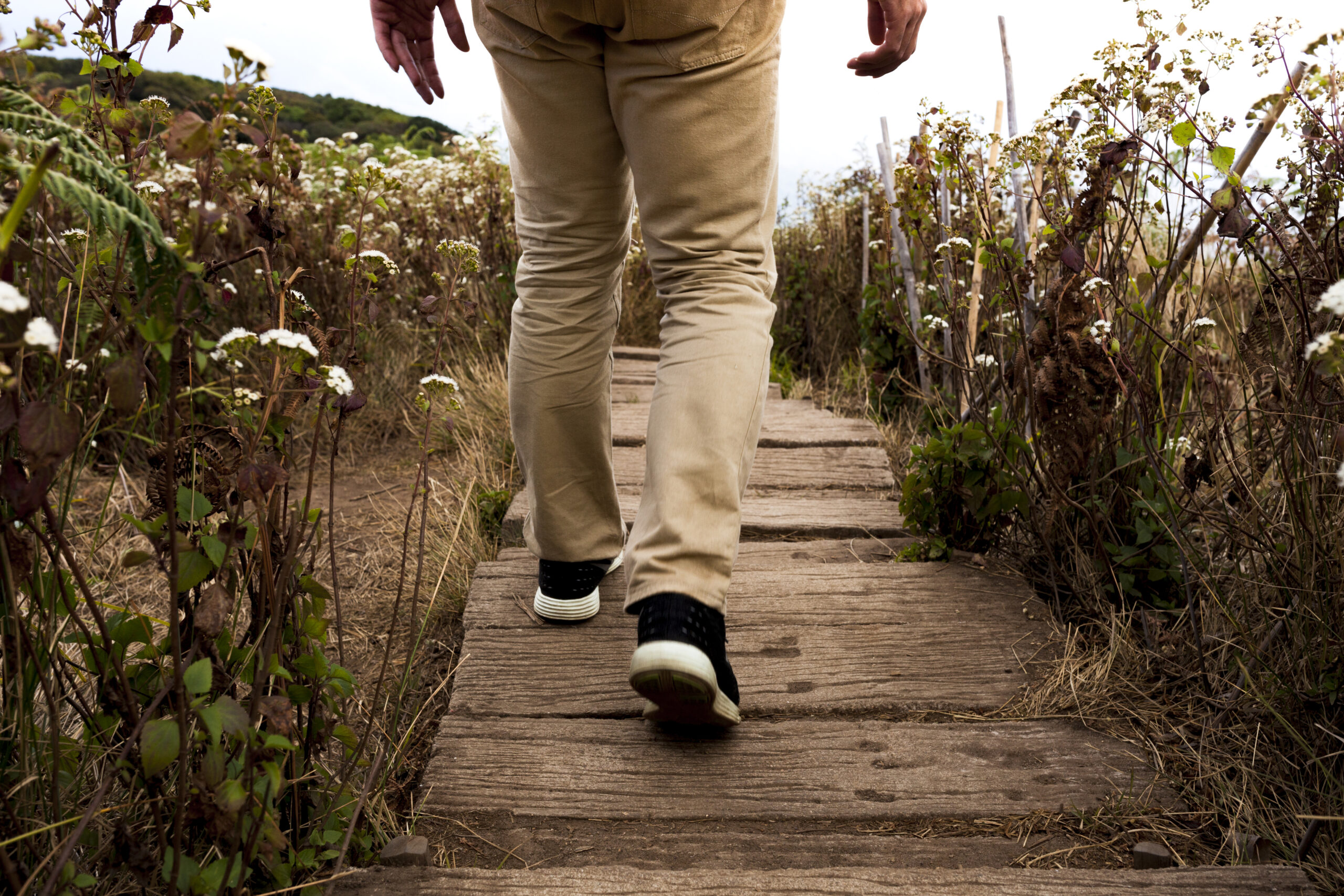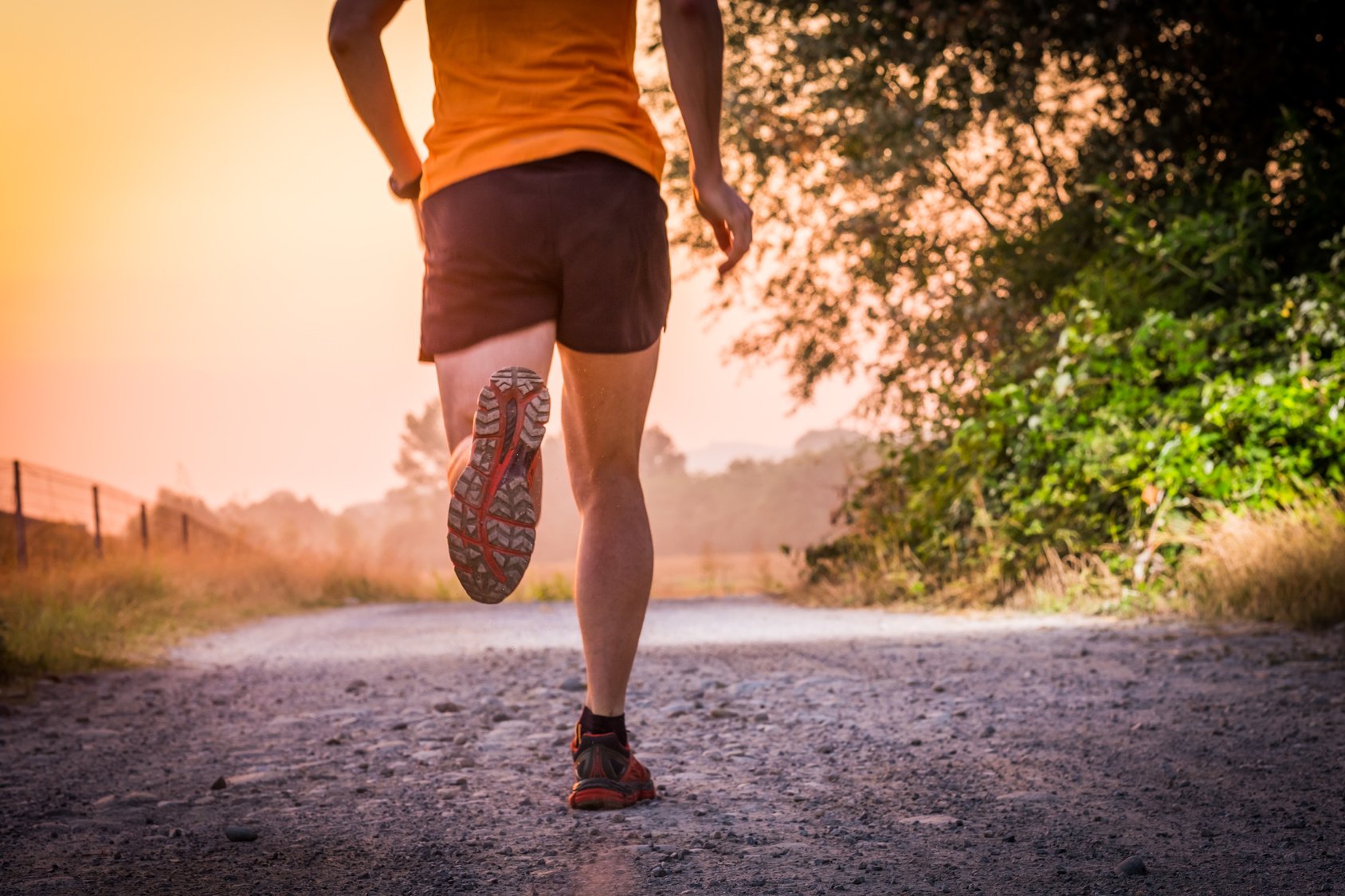Looking to run a faster mile? Then you have come to the right place.
Whether you’re a beginner runner or looking to run a faster 5K, improving your mile speed is a goal worth pursuing. In fact, for many runners, running a faster mile is a major goal. With some simple tweaks to your training plan, you’ll be set up to have your fastest mile yet.
In today’s post, I’ll share a few strategies to help you run a faster mile (almost overnight).
More specifically, I’ll cover the following:
- What is the mile?
- Why the mile Matters
- How Long Should It Take To Run one Mile?
- The Fastest Mile Ever Run
- How To Run a Faster Mile
- Interval Training For The mile
- How to Know Your mile Pace
- One-Mile Training Plan
- And so much more
Sounds great?
Let’s lace up and dig in.
What is the Mile Anyway?
Before you start training for your fastest mile, it’ll be helpful to understand how long a mile is.
The word “mile” is derived from the Latin term “mille passes,” which means one thousand paces. This is because one mile was originally defined as one thousand Roman strides, each stride being two paces.
If you live in the U.S., where you always use miles when measuring distances, you might already know and understand how far a mile is.
But if you’re using the metric system, know that a mile is 1609.34 meters. So you’ll need to complete four loops (and a few steps) on a standard track to complete one mile.
For perspective, to cover the distance of a mile, you’ll need to;
- Walk at a leisurely pace for 20 minutes
- Cover 17 and a half football fields
- Walk 20 New York city street blocks
Why the Mile Matters
A mile may sound short compared to classic race distances, but it’s a distance not to scoff at. Running a fast mile requires a lot of endurance, strength, physical fitness, and mental toughness.
What’s more?
Devoting time and effort to running a faster mile will help you build endurance and a solid base for your next training phase.
How Long Should It Take To Run 1 Mile?
I wish I had the exact answer, but it varies from runner to runner.
Overall, the time it takes to run a mile hinges on many variables, such as your current fitness level, Age, weight, height, gender, and running experience.
A beginner can likely complete a mile run in roughly 12 to 15 minutes. They can achieve this by running relatively slowly or following the run-walk method, during which the runner alternates between walking and jogging.
If you’re a beginner with no running experience, I will urge you to start with this method to ensure that you don’t push yourself too hard as you take your first few steps on your running journey. The average runner can cover a mile in 8 to 12 minutes. This pace is relatively fast but drastically slower than a 6-minute mile runner.
A good runner should be able to run a mile in less than 6 minutes. This pace is quite fast, but remember that Eliud Kipchoge completed the berlin marathon at 2:01:09. That’s an impressive 4:37 per mile.
The Fastest Mile Ever Run
The fastest mile every run to date is a sonic 3:43.13 held by Hicham El Guerroum from Morocco since July 1999. This standing world record for the imperial mile was achieved at the Stadio Olimpico in Rome during the world championship games.
As for women, the Ethiopian Sifan Hassan is the current female world record holder for the fastest mile of 4:12;33.
Fun fact – The mile has been the only non-metric distance recognized by the IAAF since 1976.
How To Run a Faster Mile
Here are the tips you need to improve your mile time as fast as possible
Start With A Baseline
Have no idea what your actual mile time is? Then perform a timed trial run. This should help you set a benchmark to measure your progress. It’s virtually impossible to reach a destination if you don’t know where you are and where you’re going.
Where? Of course, a standard track.
One lap on a standard track is precisely 400 meters long. This means that four laps roughly equal one mile.
Remember that some tracks may be shorter (or longer), so do your math first. If you’re unsure about the length of the track, just ask.
Following a 10-minute warm-up, run a mile at 9 out of 10 regarding exertion rate, then see where your current ability lies. I’d recommend performing this test every 8 to 12 weeks, depending on your training goals and personal preferences.
Interval Training For A Faster Mile
One of the best ways to improve your speed—and running confidence—is to do high-intensity interval training. Adding speed intervals to your training plan can help to improve your one-mile pace and overall conditioning.
How long and fast you go on each interval will depend on your fitness level, mile goals, and injury history.
The How? Simple.
Following a 10- to 15-minute warm-up, alternate between running fast for a given distance and then easy jogging or walking for the same distance to recover. I recommend starting with four to five repeats, then working to eight reps over a few months.
For example, you might run a few 200-meter sprints on a track – half a lap—or 400-meter sprints -full lap—with a short recovery between each effort. The session is pretty straightforward.
Performing 200-meter sprints? Then start with six reps and work it up to 8-10.
Performing 400-meters? Then start with fewer reps—let’s three to four—then try working your way to five or six. You can perform these reps on a track or any well-measured stretch of road. You can also do these sessions on the treadmill.
You should include at least one day per week to speedwork. Consider including two days per week if you’re super competitive—but don’t rush it out. Take your time.
Word of caution. If you’re a beginner, I’d advise you not to perform any speed work runs until you have a few months of steady-state training.
Find Your Target Lap Time
The second step is to define your goal time for running the mile.
If you have no idea, then the starting point test should help. Following a 10-minute warm-up, run a mile at full effort and see where your current speed lies.
Next, hit the track.
Remember that a lap around a standard track 400-meter so four laps (plus nine meters at the end) will get you a mile.
Next, divide your goal mile time by 4 to determine your target lap time.
For example, if you’re shooting for a 7-minute mile, you’ll have to run the equivalent of four laps at a pace of 1:45 minutes per lap. This is a pace of 4;20 minutes per kilometer.
A good starting pointing it completing a series of 8 to 10 reps of 200-meter at this goal pace of 1:45 minutes per 400-meter, then taking a 30-second recovery in between each repetition.
Additional resource – How to run at night
Build Endurance
Speed is just one piece of the puzzle. You’ll also need to improve your ability to run longer distances than the mile.
You might already run a few times longer than a mile, but you’ll want to add one run that’s drastically longer.
To build your running distance, start by slowly increasing your weekly mileage. Start with two to three miles, then add one mile a week until you cover six to eight-mile a session.
For example, if your longest run is 4 miles and your total weekly mileage is 12 mine, add roughly one mile per week until your longest run is over 8 miles.
This can be done by adding a mile to your longest run or increasing your total weekly load by up to 10 percent each week.
Planning to train for a half marathon or full marathon? Then keep building distance on that long training day. Completing one long run per week—as well as other runs on schedule—will improve your endurance and stamina, which will result in faster times.

Improve your Leg Strength for a Faster Mile
Speed, endurance, what else?
Of course, strength.
Although running (more and faster) is the best way to improve your performance, what you do on your non-running days can drastically impact your mile time.
Strength training is key for optimal running performance. Your calves, hamstrings, quadriceps, glutes, and core all play an important role.
Stronger muscles set you up for healthy form and efficient performance, which allows you to run faster at a faster pace with less effort.
Lifting weights can also increase your stride length, which is key for faster running.
Some of the best exercises to improve your running speed include:
- Squats
- Squat-thrusters
- Lunges
- Burpees
- One-legged squats
- Calf raises
As a rule, shoot for 10 to 15 reps of each exercise. In addition, aim for two to three circuits.
Remember that you don’t need to become an Olympic weightlifter to see gains in speed. At a minimum, you’ll need two 30- to 45-minute sessions per week to see great results.
Run Hills To Improve Mile Speed
Looking for more?
One thing you can do to mix speedwork and strength training is to do hill reps. This is, in fact, one of the most effective ways to fire up your glutes and increase your leg strength.
Uphill running can also enhance your running efficiency and improve your lactate threshold—all of which help improve your mile speed.
Hills are a great addition to a mile training plan because they feel challenging, but put less stress on your body than running on a flat surface.
Hill training also requires more muscular engagement and calorie burn, making them harder sessions before speed is considered.
Hills are an ideal way to improve leg strength.
First, locate a hill that measures around 300 feet with a moderate gradient. Make sure the hill is steep enough that running up it feels like an 8-9 out of ten in terms of effort. Next, complete six to eight reps, with a jog back for recovery.
Run as fast as possible for 30 seconds, then walk down to recover. Once you’re done, finish your session with a 10-minute cool-down jog on a flat surface.
Keep your focus on good technique, and don’t try to force your way to the top. For more challenges, go for a steeper hill to work on power.
Start with five to six reps, and work to at least 10.
Stuck on the treadmill? Shoot for a 4 to 6 percent incline.
Improve Your Form
Running a faster mile isn’t just about running then more running. Technique also matters—and it matters a lot.
Proper form helps you move more efficiently, which increases not only your speed but also your endurance. You should aim to improve your form before speed, especially if you’re a beginner runner.
There are many things you can do to improve your running form.
- Try to run as tall as possible, back straight, core engaged, and shoulders relaxed while striking the ground on your midfoot.
- Keep your head up to keep good posture and balance. Avoid hunching over or tilting your neck down.
- Bent your arms around a 90-degree angle with a little elbow bend. Make sure you have a nice comfortable arm swing.
- Activate your core and use quick and short strides. Avoid overstriding, as taking giant leaps can only slow you down and put more pressure on your muscles and joints.
What’s more?
You can also perform dynamic warm-up drills focusing on different aspects of good running technique. This helps make sure that your movement is optimized during your workout. The efficiency of movement is key and all that.
To put this into practice, perform drills that accentuate various aspects of proper form. Do them as a part of your warm-up. Some of these drills include:
- Butt kicks
- Soldier walk
- Fast feet drill
- Backward running
- Carioca
Improve Your Cadence
Also known as stride rate, running cadence is the rate at which your feet hit the ground while running.
Instead of trying to lengthen your stride to cover more ground when trying to pick u the pace, increase your cadence and focus on taking short and quick steps as you run faster. This increased cadence may also help prevent many common overuse injuries, research shows.
Most running experts preach a cadence of 170-180 strides per minute. But keep in mind that the research suggests that cadence is highly personalized.
Here’s how to determine your cadence and how to improve it.
First, know your current stride over.
On your next run, count the number of steps you take in one minute. Try counting just one foot and then double it to get your total cadence. Some running watches also can estimate cadence.
Next, if your current stride is too low, gradually improve it by adding 3 to 5 steps every few runs. The rest is just details. Just remember not to obsess over cadence when you’re a beginner runner. Instead, run in a comfortable way, letting your body find its natural rhythm.
Lose Extra Weight
Looking for extra motivation to lose weight? Then this should get you.
Weight is a compound measurement that depends on many variables such as diet, access to food, hormone, sleep, lifestyle, socioeconomic factors, etc. But, overall, expect to improve your speed by losing any excess weight you might be carrying.
The larger your body, the more energy you burn off since running is a weight-bearing exercise. This means that your weight influences the force and intensity of the activity.
Of course, don’t take my word for it. Research has shown that runners can get 2 seconds per mile faster for every excess pound they lose. This means a 16-pound weight loss could shave 30 seconds off your mile price time. That’s a lot.
And it’s not just one research. This 1978 experiment looked into how a 12-minute run performance was impacted when adding 5 percent, 10 percent, and 15 percent extra weight compared to the subject’s normal body weight.
The researchers concluded that the running pace was slowed by roughly 1.4 seconds per mile for each extra pound added.
Another research looked at the same thing but used the reverse approach. Instead of adding weight, the researchers lightened runners by 5 to 10 percent of their normal body weight via ropes and pulleys while they ran on a treadmill.
In the end, it was reported that they were about 2.4 seconds faster per mile for every “lost pound.”
At a glance, this may not seem like much, but a 16-pound loss would equate to a roughly 20 to 30 seconds faster mile, with all equal.
Remember that these studies are conducted in a lab setting, so it’s quite different from real-world conditions.
What’s more?
And if you try to lose weight, you might also lose some muscle with the fat, which is not optimal. You might also be fueling while training for a hard race, which compromises training and can limit overall performance.
Recover Well
You can train hard seven days a week, but your efforts will be in vain without proper recovery. Though getting outside your comfort zone is key when working toward running a faster mile, your recovery time is just as crucial in your result.
For this reason, feel free to push yourself during training, but don’t forget to go all out when you recover. It’s a fine balance between stress and recovery. Don’t overtrain, nor should you undertrain. Find the sweet spot.
As a rule, you should schedule at least one full weekly rest day.
- Avoid training hard two days in a row, such as an interval training or hill reps workout.
- Get adequate sleep – shooting for 7 to 9 hours per night.
- Balanced diet – your nutrition plan should include all three macronutrients and be composed of nutrient-dense foods.
- Stretch often. Try these yoga poses.
- Foam roll
- Massage
- Acupressure or acupressure mats
- Recovery doesn’t mean a lazy day. Instead, feel free to perform cross-training activities like biking, walking, or swimming.
For the full guide to recovery for runners, check my post here.
Be Consistent
I hate to sound too cliché, but consistency is key – and that’s the case whether you’re trying to make a 7-figure income or run a sub-7-minute mile.
As a rule of thumb, I urge you to follow a training plan (one you find online or one designed by a coach) and include at least four to five days of running each week to improve your mile time.
Running on a whim isn’t the best way to improve performance. Instead, you must log the miles on a consistent base so the body can adapt to the high-impact stresses of running faster. And that doesn’t happen overnight.
Let’s see how to put this into practice.
One-Mile Training Plan
Just because it’s just a “mile,” it doesn’t mean you shouldn’t follow a running program to help you improve your time.
Depending on your running experience and starting point, training for the mile might sound like a little or a lot. But, regardless of your current goals, there’s always room for improvement when it comes to the mile.
A 1-mile training plan is useful for any serious runner craving more structure as they strive to improve their mile time and performance.
The good news is that there are many one-mile training plans available online. But before you go and pick one, I recommend you review any schedule with a running coach or someone with more running experience than you.
Don’t have access to a running coach? Then feel free to email me at [email protected] or, at the very least, ensure your chosen training plan is well-rounded. An ideal running schedule for the mile should include short-distance sessions, long-distance sessions, cross-training workouts, and rest days—just like any other training plan would.
The main variable is the distance. For example, a long-distance marathon session might be 20 miles, but you won’t need to run that far to improve your mile time.
The exact training plan will depend on your fitness level, pace, running and experience, and most importantly, your goal pace.
What’s more?
Remember that you don’t need to train on specific days, but you might want to avoid running twice a row as a beginner. The fitter you get, the more load you can handle over time.
On your non-running days, feel free to cross-train or rest so your body can recover and adapt to training.
The below one-mile training plan is ideal for beginners, those returning from break, or runners looking to keep base training fitness during the off-season.
Week One
- Monday – Three miles easy
- Tuesday – Cross train or rest
- Wednesday –Speedwork: 10 X 200-meter. 30 seconds rest.
- Thursday – Cross train or rest
- Friday – three miles moderate
- Saturday – 45 to 60 minutes long run at an easy pace
- Sunday – Cross train or rest
Week Two
- Monday – four miles easy
- Tuesday – Cross train or rest
- Wednesday – Speedwork: 8 X 400-meter. One minute rest.
- Thursday – Cross train or rest
- Friday – Four miles moderate
- Saturday – 60 minutes long run at an easy pace
- Sunday – Cross train or rest
Week Three
- Monday – Three miles easy
- Tuesday – Cross train or rest
- Wednesday –Speedwork: 5 X 800-meter. One minute rest
- Thursday– Cross train or rest
- Friday –Three miles easy
- Saturday – 80 minutes long run at an easy pace
- Sunday – Cross train or rest
Week Four
- Monday – Four miles easy
- Tuesday – Cross train or rest
- Wednesday – Speedwork: 10 X 400-meter at target pace. 30-second rest
- Thursday – Cross train or rest
- Friday –Three miles moderate
- Saturday – 80 minutes long run
- Sunday – Rest
Week Five
Monday – Test Run or Race!
Race Day Advice For Running Your Fastest Mile
Feel like you’re ready to test your mettle? Then let’s see how fast you can run that mile.
Warm-up
I hate to sound like a broken record, but before you try to run your fastest mile, you should get your muscle set and ready first. A proper warm-up is key for injury prevention and sets the stage for optimal performance.
So what kind of warm-up I’d recommend?
Simple. Start by jogging for 10 to 15 minutes, then perform a series of dynamic stretches such as high knees, butt kicks, inchworms, and toy soldiers. Next, perform fast but short strides to get your body firing on all cylinders.
Get Your Mind Ready
The mile is no distance to scoff at, so you better approach it with the right mindset and respect. Although it’s only four laps around the track, it will hurt.
Mentally go through the four laps in your head. Know exactly what times you want at each lap, then picture yourself running the perfect mile. See yourself running strong, tall, and with good technique. Leave nothing for chance.
Stick to Your Target Lap Time
Have a mile goal? Great. Now break down your target mile time by 4 to determine your target lap time.
If you aim to run a 7-minute mile, you have to run the equivalent of four laps of a standard track at exactly 90 seconds per lap or a 3.45 minute per kilometer.
Have A Stopwatch
A useful tool to have during your mile training is a stopwatch.
When running at a measured distance, a stopwatch will help you accurately measure your lap times and ensure you’re running at the right pace in line with your mile training plan.
The First Lap
Run the first lap as fast as possible, even if it means kicking off the one-mile run faster than needed to get your goal time.
Mentally you’re likely to slow down as you run more laps, so make up for lost time during the first lap. But be careful not to spend all your energy.
The Second Lap
Run this lap at exactly your target time. For example, in the 7-minute mile I mentioned before, lap two is when you should be running exactly one minute 45 seconds, so your time by the halfway point should be around 3:25 to 3:29.
The Third Lap
Lap 3 is the critical part of the mile distance, where you must push yourself the hardest to ensure you don’t slow down. Focus to keep yourself on pace when every cell in your body is begging you to slow down.
To psych up, try devoting that third lap to someone important in your life and promise not to disappoint them.
The third lap is the toughest. This is, in fact, the lap that will determine whether you achieve your goal time or not. You’re more likely to slow down for your initial pace.
The Fourth Lap
The last lap is where you lay it all out. You’re at the final stretch of the mile. The hardest part is already over, and it’s time to run as fast as possible.
Chances you’ve already slowed down on your previous laps, so you need to dig deep and push yourself the hardest. Know that the end is nigh.
And during the last curve, perform the “kick” by sprinting the last 200 meters as fast as possible.
How To Run a Faster Mile – The Conclusion
There you have it! Trying to run a faster mile shouldn’t be that complicated. All you need is the right mindset, strategies, and a bit of luck. Don’t forget to have enough rest and recovery, so your body will work effectively.
Please feel free to leave your comments and questions in the section below.
In the meantime, thank you for dropping by.
Keep training strong.
David D.


